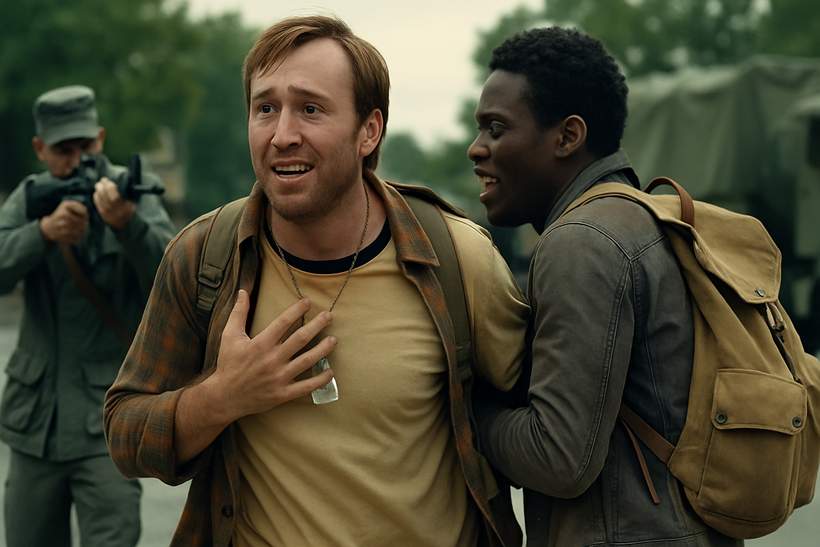Let’s Talk About The Long Walk
So, here we are, diving deep into the murky waters of adaptations! Today, we’re flipping the pages of Stephen King’s
The Long Walk and its shiny new film counterpart. Get your popcorn ready, because there are some juicy details worth chewing on!
The Original Vibe
First off, let’s give a shout-out to
The Long Walk, King’s first completed novel, even though it didn’t hit the shelves first—thanks a lot,
Carrie! Written during a turbulent time (you know, the Vietnam War and all), this tale is like an emotional roller coaster filled with teenage chaos and existential dread. Picture this: a bunch of adolescent boys, all on a deadly walk, and it’s not your average school field trip. It’s a fierce commentary on youth, mortality, and, well, the absurdity of it all!
A Whole New Walk – The Movie
Fast forward to the film, helmed by Francis Lawrence, who’s ready to sprinkle his Hunger Games magic all over King’s words. But hold onto your hats, folks! This isn’t a simple stroll down memory lane; they’ve made some bold changes, especially with an ending that will have you going, “Wait, what?”
Let’s Break Down the Changes
Starting with the nitty-gritty, when adapting a novel that’s already pretty tight, certain things just… vanish. For instance, in the book, our speedy walkers have to maintain a brisk pace of four miles an hour. But lo and behold, our film crew decided that three miles per hour was just peachy. Why? Well, I can just picture King saying, “Dude, walking four miles an hour for ages is a bit much!” Smart call, King!
Who’s in the Race?
The book lists a whopping 100 participants chosen in a lottery, but our movie slashes that number down to 50. You know, just to save on extras or something. And every state got a representative in the book, but in the movie, it kinda feels more like a small-town fair where everyone knows each other. Keeping it cozy, I guess!
Character Mash-Up!
Now, let’s talk characters! In the film, some of the boys are like mashed potatoes—combined together to make fewer personalities. For example, the character of Mark Colson got a wife in the film when the book had him as a roguish figure with no significant other. Poor Scramm, a hillbilly athlete in the novel, morphed into someone else entirely! Less time and budget means some characters had to get cozy together!
The Gritty Details of Their Motivations
Now on to our main guys, Ray Garraty and Peter McVries. In the pages, Garraty’s all over the place when it comes to his reasons for joining the Walk—a bit of youthful rebellion spurred by daddy issues, perhaps? Meanwhile, the film gives him a clearer, more revenge-oriented mission that could easily be an inspiration for a superhero movie!
As for McVries, let’s just say his backstory went from a dark and twisty take on relationships to a more charismatic and lovable character in the movie. The original McVries isn’t sweet; he’s got a scar that tells tales of a much different past. The emotional weight has been dialed down a notch for the big screen.
Love, Death, and Everything in Between
Also, let’s not forget the sprinkle of romance! In King’s version, Garraty has a girlfriend who inspires him through the pain and chaos. Maybe it’s a classic tale of love amidst death? But in the film, those romantic nuances are mysteriously snipped away like a bad haircut—leaving us with just the grim sundae of camaraderie.
The Grand Idea – Why Walk?
Both the movie and the book toy with the question of why these boys willingly enter the lottery. The film nudges us towards a collective experience where no one backs out. Yet, in the book, some actually do have the guts to drop out. This twist screams ‘social commentary!’ as King reflects on how society pushes boys into dangerous paths with a cheer.
Now, About That Ending!
Alright, let’s tackle the elephant in the room: the ending! Spoilers ahead, folks! In the book, Garraty’s left in a hauntingly ambiguous place, with a dark figure lurking as he “wins” the race. The ending is all about existential dread—because come on, nobody wins this kind of game!
But the film? Oh man, does it flip the script! Garraty sacrifices himself for McVries, which leads to McVries taking vengeance in a dramatic fashion. It’s a crowd-pleasing ending for sure, but it’s drenched with the same bleak vibes as the original. A true twist of fate wrapped in twisted love!
Let’s Wrap It Up!
So there you have it, folks! Both versions of
The Long Walk, while sharing a heart, manage to strut along different paths. Whether you find yourself scanning the pages or glued to the screen, the tale serves up a grim reminder of youth, choices, and the curious ways we seek belonging in this wild world. The Long Walk is rolling into theaters now, so catch a showing if you can handle the walk!

